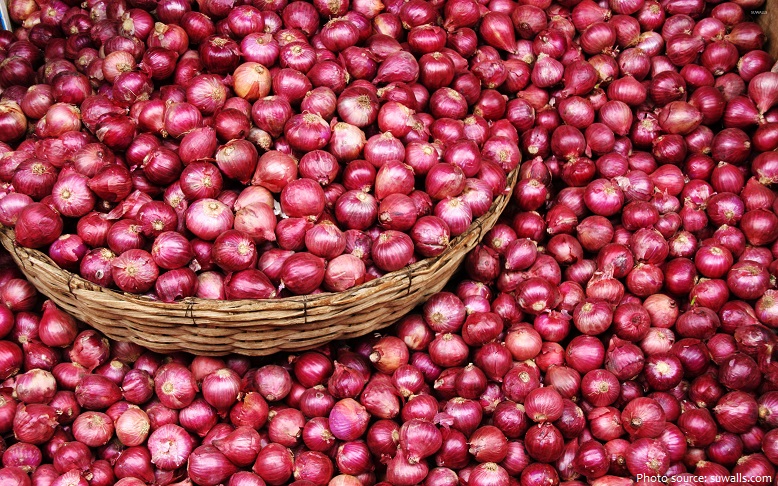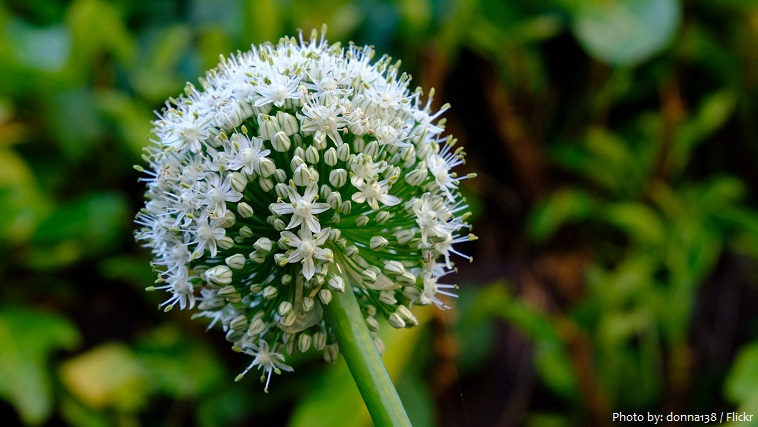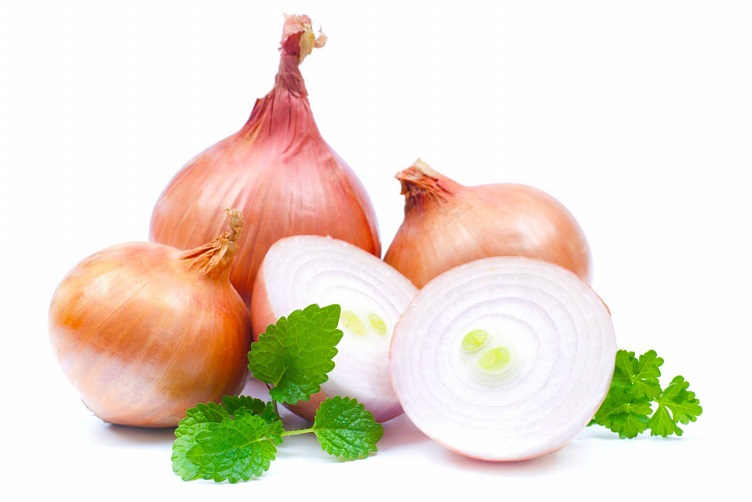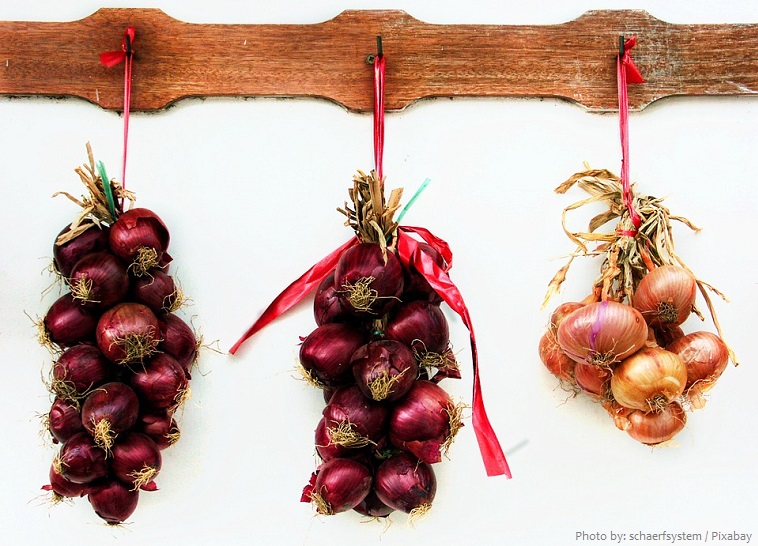The onion also known as the bulb onion or common onion, is a vegetable.
Because onions are small and their tissues leave little or no trace, there is no conclusive opinion about the exact location and time of their birth. Many archaeologists, botanists, and food historians believe onions originated in central Asia. Other research suggests onions were first grown in Middle East by Babylonian culture in Iran and West Pakistan.
Most researchers agree the onion has been cultivated for 5000 years or more.
Today, it is grown throughout the world, chiefly in the temperate zones.
The onion plant is a biennial plant, but is usually grown as an annual. Modern varieties typically grow to a height of 15 to 45 cm (6 to 18 in).
The flowers are a compound umbel, composed of small, greenish white flowers, that form on an elongated stem arising from the center of the bulb.
The leaves are yellowish- to bluish green and grow alternately in a flattened, fan-shaped swathe. They are fleshy, hollow, and cylindrical, with one flattened side.
The concentric leaf bases of the developing plant swell to form the underground edible bulb.
The bulbs vary in size, shape, colour, and pungency, though warmer climates generally produce onions with a milder, sweeter flavour than do other climates.
Onions are normally available in three color varieties:
• Yellow or brown onions (called red in some European countries), are full-flavoured and are the onions of choice for everyday use, with many cultivars bred specifically to demonstrate this sweetness.
• The red onion (called purple in some European countries) is a good choice for fresh use when its color livens up the dish; it is also used in grilling
• White onions are the traditional onions used in classic Mexican cuisine; they have a golden color when cooked and a particularly sweet flavour when sautéed
As a food item, they are usually served cooked, as a vegetable or part of a prepared savoury dish, but can also be eaten raw or used to make pickles or chutneys.
They are pungent when chopped and contain certain chemical substances which irritate the eyes.
There are only 40 calories in 100 grams (3.5 ounces) of onions.
Onions are a very good source of biotin and a good source of B-complex vitamins, vitamin C, manganese, copper, fiber, phosphorus, potassium and folate.
The health benefits of onions include improve heart health, boost the immune system, prevent and relieve symptoms of diabetes, treating asthma and respiratory problems, bone health, boost digestive dealth, help in treating the common cold, cough and angina, aid weight loss and help prevent cancer.
Its close relatives include the garlic, leek, chive, and Chinese onion.
In Egypt, onions were considered to be an object of worship. The onion symbolized eternity to the Egyptians who buried onions along with their Pharaohs. The Egyptians saw eternal life in the anatomy of the onion because of its circle-within-a-circle structure.
Onions were eaten by the Israelites in the Bible. In Numbers 11:5, the children of Israel lament the meager desert diet enforced by the Exodus: “We remember the fish, which we did eat in Egypt freely, the cucumbers and the melons and the leeks and the onions and the garlic.”
Pliny the Elder of the first century CE wrote about the use of onions and cabbage in Pompeii. He documented Roman beliefs about the onion’s ability to improve ocular ailments, aid in sleep, and heal everything from oral sores and toothaches to dog bites, lumbago, and even dysentery.
In the Age of Discovery, onions were taken to North America by the first European settlers, only to discover the plant readily available, and in wide use in Native American gastronomy.
The expression “layers of the onion” is used to describe a situation in which it is possible to go deeper and deeper revealing seemingly similar layers until a central core is reached. It has been used as a metaphor in mysticism to describe the supposed layers of reality.






